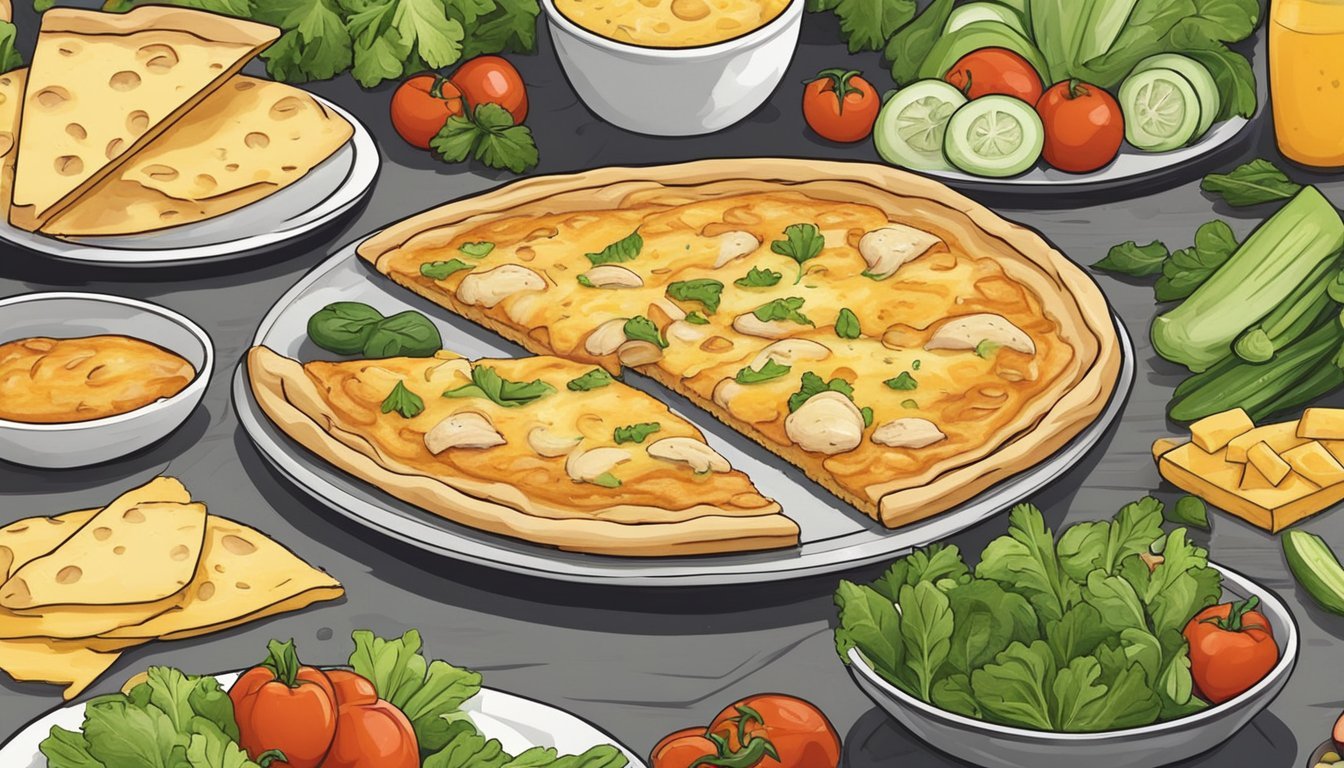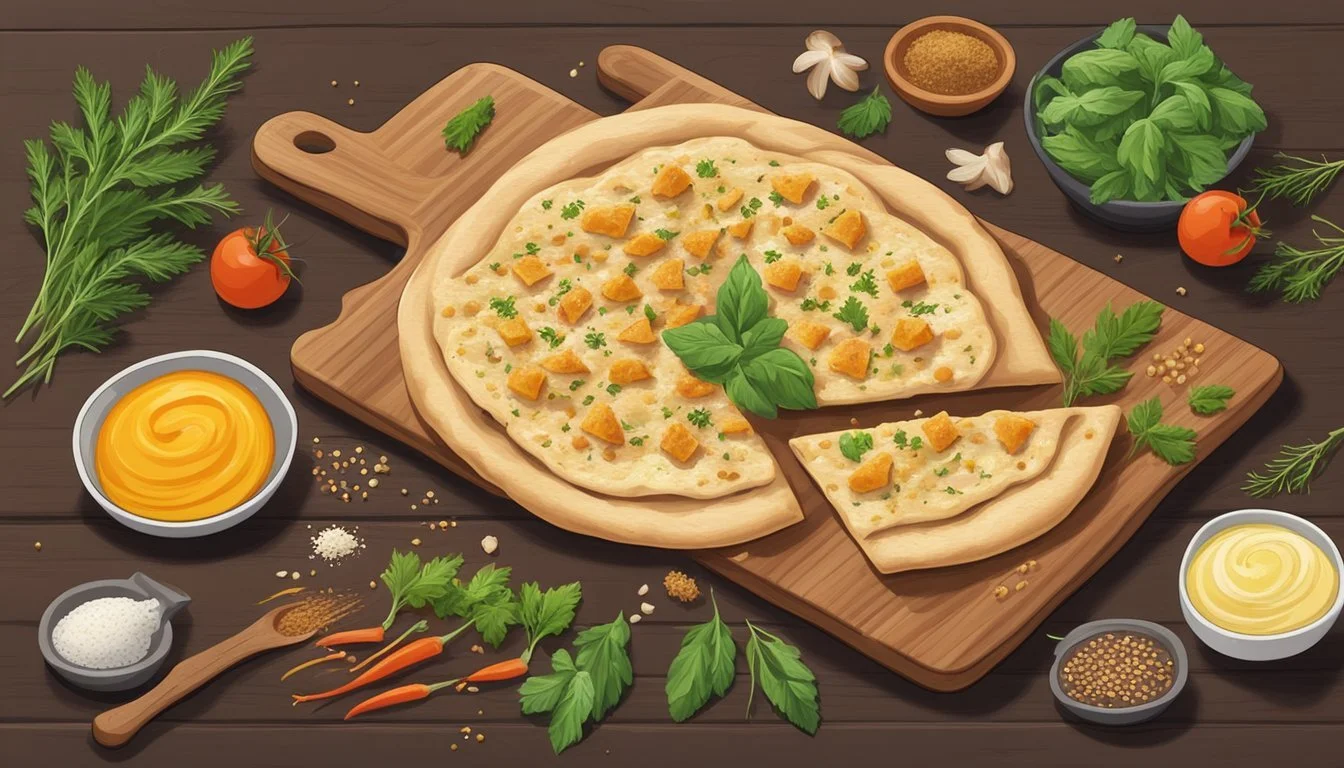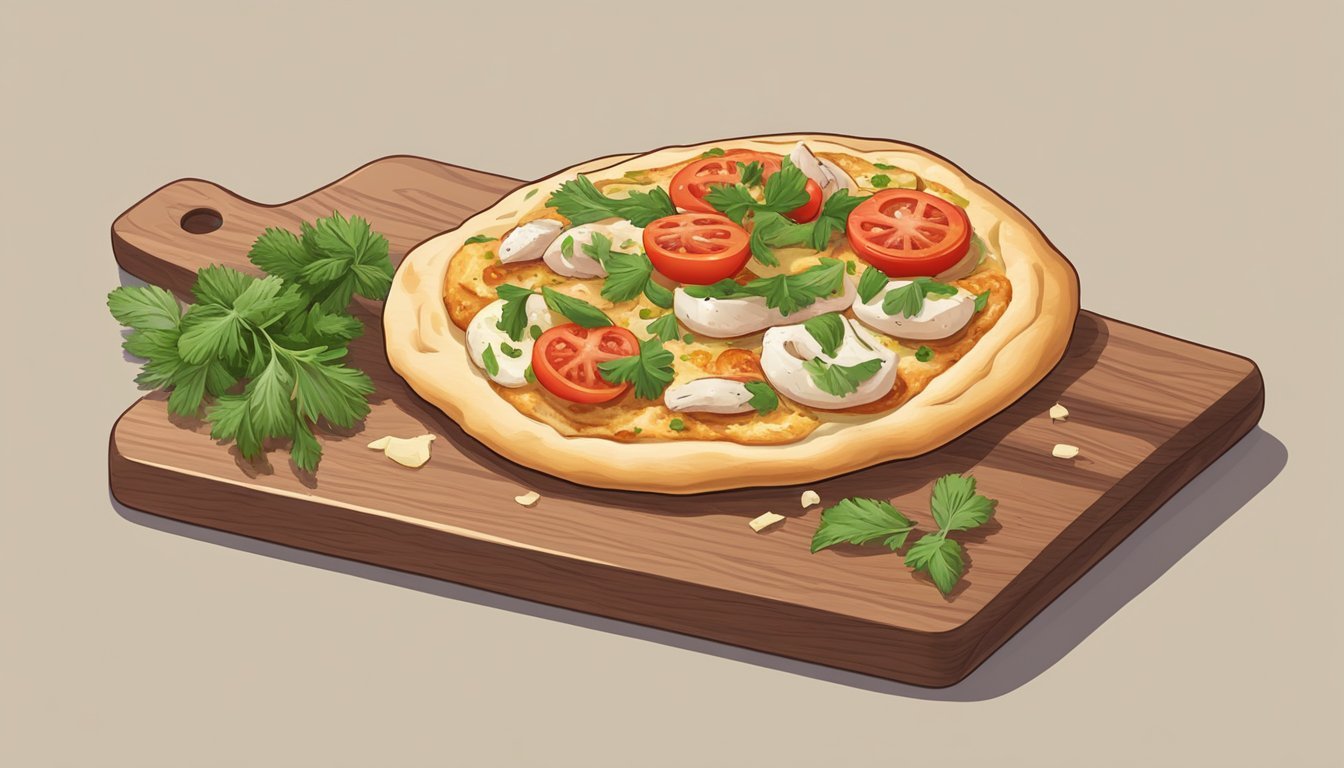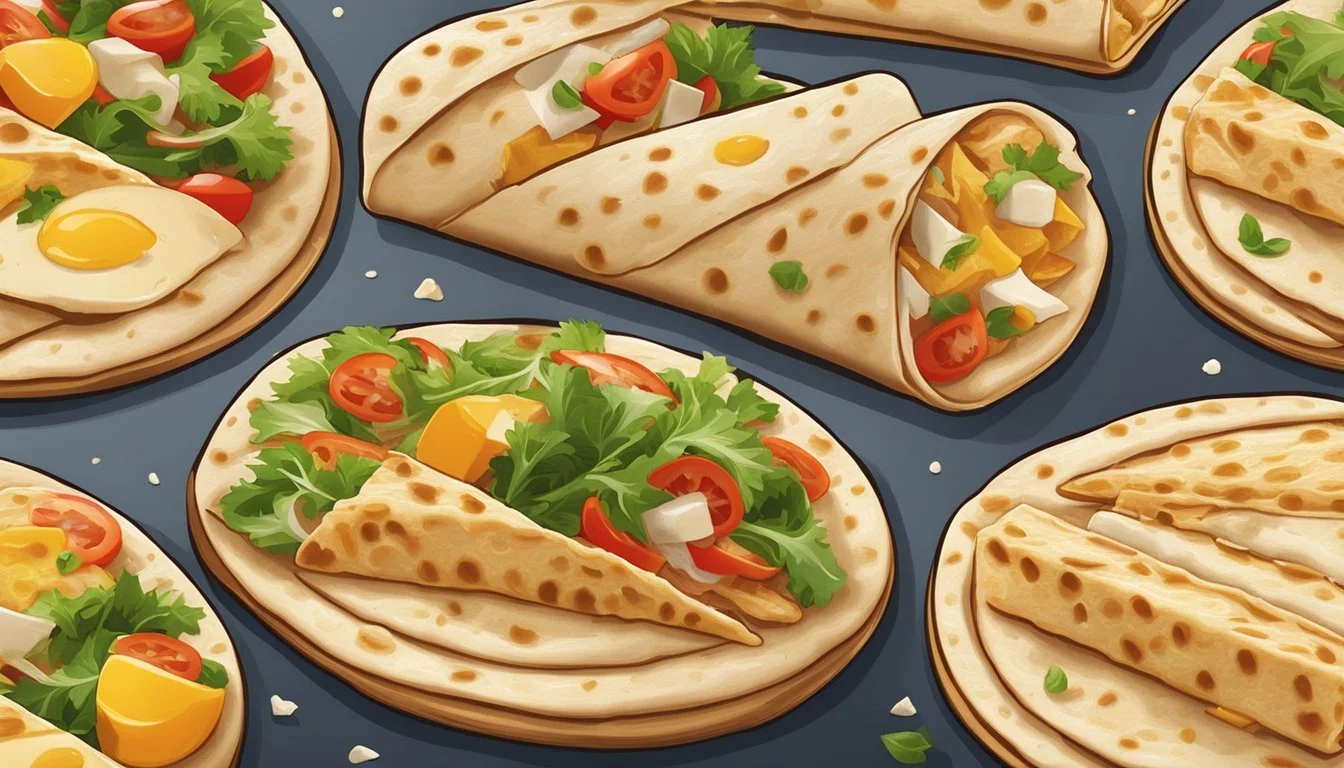How Long Does Chicken and Cheese Flatbread Last?
Storage Tips and Shelf Life
Chicken and cheese flatbread is a popular and versatile dish enjoyed by many for its delicious flavors and convenience. This dish can be a quick and satisfying meal, but knowing how long it lasts is crucial for ensuring food safety and freshness. Chicken and cheese flatbread typically lasts up to three to four days when stored properly in the refrigerator.
When considering how long your flatbread will stay fresh, it’s important to note the role of each ingredient. Chicken, being a protein, needs to be refrigerated promptly after cooking to prevent spoilage. Similarly, cheese can also degrade in quality if not stored correctly, though it tends to have a slightly longer shelf life compared to cooked chicken.
By storing your chicken and cheese flatbread in an airtight container in the fridge, you can maximize its shelf life and enjoy it safely within this timeframe. For those looking to keep it longer, freezing is an option, though it may affect the texture and flavor of the flatbread.
Understanding Chicken and Cheese Flatbread
Chicken and cheese flatbread is a popular and versatile meal option. It combines simple ingredients like chicken, cheese, and flatbread to create a delicious and satisfying dish.
Ingredients
Common ingredients include:
Chicken (diced or shredded)
Cheese (mozzarella, cheddar, or blue cheese)
Flatbread
Optional sauces (buffalo sauce, ranch dressing)
Nutritional Information
Chicken and cheese flatbread can be a high-protein meal. Depending on the toppings and flatbread type, it can also be low carb if using a low-carb flatbread.
Nutrition per serving can vary but typically includes:
Protein: 20-30 grams
Carbohydrates: 30-40 grams
Fiber: Around 2-3 grams
Saturated Fat: 5-10 grams
Cholesterol: 50-80 mg
Sugar: 2-5 grams
Variations
For those with dietary restrictions, chicken and cheese flatbreads can be adapted to be:
Vegetarian: Swap chicken with plant-based protein.
Gluten-free: Use gluten-free flatbread options.
Healthy: Opt for low-fat cheese and lean chicken cuts.
Preparation
Typically, the preparation involves:
Baking the flatbread in the oven.
Spreading cheese and toppings.
Cooking until the cheese is melted and the flatbread edges are slightly crisped.
Chicken and cheese flatbread offers a comforting and flavorful experience, without the complexity of a long recipe. Its straightforward nature makes it a favorite for many.
Storing Chicken and Cheese Flatbread
Proper storage of chicken and cheese flatbread ensures it remains fresh and safe for consumption. Techniques can vary depending on the intended duration of storage.
Refrigeration Techniques
Refrigerating chicken and cheese flatbread can keep it fresh for up to 4 days. After baking, allow the flatbread to cool completely on a baking sheet lined with parchment paper. This step helps prevent condensation, which can make the flatbread soggy.
Once cooled, wrap the flatbread tightly in aluminum foil or place it in an airtight container. This minimizes exposure to air, maintaining texture and preventing the crust from becoming chewy.
If you incorporate moist cheeses like ricotta cheese or full-fat cottage cheese, consume within 2-3 days for optimal flavor and safety. Ensure the flatbread is thoroughly reheated before consumption, ideally using an oven or air fryer to restore crispness.
Freezing Methods
To extend the shelf life, freezing chicken and cheese flatbread is an effective option. After cooling, cut the flatbread into individual portions for easier thawing and reheating.
Place each portion on a baking sheet lined with parchment paper to prevent sticking and freeze for about an hour. Once frozen, transfer the pieces to a ziplock bag or wrap in plastic wrap followed by aluminum foil.
Properly sealed, the flatbread can last up to 2 months in the freezer. When ready to eat, reheat the frozen flatbread directly in the oven or air fryer at 350°F (175°C) until warm and crispy, avoiding the microwave to prevent sogginess.
Preparation and Cooking Instructions
Creating a chicken and cheese flatbread involves three main steps: making the dough, adding toppings and cheese, and baking to perfection. Each step ensures the final dish is healthy, protein-packed, and delicious.
Making the Dough
To prepare a flourless, gluten-free flatbread dough, blend cottage cheese and eggs until smooth. This mixture forms the base, with seasonings like garlic powder, Italian seasoning, salt, and black pepper enhancing the flavor. Preheat the oven to 350°F (180°C) and line a baking sheet with parchment paper to prevent sticking. Pour the blended mixture onto the baking sheet, spreading it evenly. This prep takes around 10 minutes and helps create a base that’s crispy and golden brown.
Adding Toppings and Cheese
Once the dough is ready, add your preferred toppings and cheese. Start by spreading a layer of tomato sauce or olive oil over the dough. Arrange sliced chicken pieces evenly. Mozzarella and parmesan cheese are excellent choices for a rich, creamy texture. Enhance the taste with fresh or dried herbs like basil, rosemary, oregano, and thyme. Season with a touch of black pepper and salt. The key is to balance the toppings for a hearty yet healthy flatbread.
Baking to Perfection
Bake the prepared flatbread in a preheated oven at 350°F (180°C) for 18-20 minutes or until the edges become golden brown and crispy. Adjust the time based on the desired level of crispness. For a bubbly, golden cheese topping, switch the oven to broil for the last 1-2 minutes. Baking transforms the ingredients into a cohesive, delicious meal. Check often to avoid burning, ensuring the flatbread remains perfect from crust to toppings.
Nutritional Profile
Chicken and cheese flatbread can be a nutritious choice when made with wholesome ingredients.
Calories: The calorie content will vary based on the ingredients and portion size. A typical serving can range from 250 to 400 calories.
Protein: High in protein, especially due to the chicken and cheese, a serving might provide approximately 18-25 grams of protein. This contributes to muscle maintenance and repair.
Fat: The fat content too depends on the cheese and oil used. It typically contains 10-15 grams of fat, including saturated and unsaturated fats.
Saturated Fat: Often found in cheese and certain cooking oils, saturated fat might constitute around 5-7 grams. Consuming saturated fats in moderation is recommended.
Unsaturated Fat: Healthier unsaturated fats from olive oil or avocados may be present, contributing around 3-6 grams. These are beneficial for heart health.
Trans Fat: Ideally, homemade flatbreads should have negligible or zero trans fats, reducing the risk of heart disease.
Cholesterol: Cheese and chicken can add to the cholesterol content, typically around 60-80 milligrams per serving. Monitoring cholesterol intake is important for cardiovascular health.
Sodium: Salt and cheese can make sodium levels significant, ranging between 400-600 milligrams. Opting for low-sodium cheese or reducing added salt can help manage intake.
Fiber: If whole grain or fiber-rich ingredients are used in the flatbread, fiber content could be around 2-4 grams. Fiber aids in digestion.
Sugar: Sugar levels are typically low, unless sweetened ingredients are added. Expect around 1-2 grams of sugar per serving.
Carbohydrates: Depending on the type of flour used, carbohydrate content may range between 20-35 grams. Whole grain options provide more nutrients and fiber.
For detailed nutrition, consider using a nutrition calculator based on specific ingredients and their quantities.
Creative Variations
Combining chicken and cheese flatbread with various items can elevate this dish into something even more delicious and exciting. Exploring alternative protein choices and experimenting with unique toppings can tailor the flatbread to different preferences and dietary needs.
Alternative Proteins
While chicken is a popular choice, there are several alternative proteins that can be used to create a diverse selection of flatbreads. Turkey breast or ham can offer a different flavor profile and are also high in protein, ensuring a hearty meal. For a protein-packed vegetarian option, consider using ricotta or cottage cheese. Incorporating plant-based proteins like hummus or mashed avocado can provide a creamy texture and rich taste, ideal for a vegetarian flatbread.
Adding spinach is another excellent choice, providing both protein and essential nutrients. These proteins can be seasoned with Italian seasoning, garlic, or other favorite herbs to enhance their flavor, making the flatbread even more appetizing and versatile for various palates.
Unique Toppings
Choosing unique toppings can dramatically change the taste and experience of a chicken and cheese flatbread. For a cottage cheese pizza twist, adding lettuce, tomatoes, and thinly sliced cucumber can create a fresh, crunchy contrast. Bell peppers and red onion can add a sweet and pungent flavor, respectively, that complements the savory chicken.
Using classic sandwich toppings like spinach and avocado can boost both flavor and nutritional value. Garnishing with fresh herbs such as basil or oregano can provide an aromatic finish. Drizzling a bit of hummus or even Italian seasoning on top can introduce a delightful new dimension to the traditional flatbread.
Experimenting with various toppings allows for endless customization, ensuring that each flatbread can be tailored to individual tastes, dietary needs, and creative inclinations.
Serving Suggestions
Chicken and cheese flatbread can be enjoyed in multiple ways, whether as a meal or a snack. Enhancing the flavor and presentation can elevate this dish to a gourmet experience.
Accompaniments
Pair chicken and cheese flatbread with side dishes to complement its taste.
Marinara sauce works well as a dipping option for those who enjoy a tangy flavor.
Hummus can add a creamy texture and pairs nicely with the savory ingredients.
A drizzle of balsamic glaze adds a hint of sweetness and depth.
Olive oil with a pinch of garlic salt makes a simple but flavorful addition.
Consider adding a fresh salad with leafy greens and a light vinaigrette to balance the meal.
Presentation Tips
Presenting the flatbread beautifully can enhance the dining experience.
Cutting the flatbread into uniform slices or small squares can make it more visually appealing and easier to handle.
Arrange slices on a large platter with some fresh herbs, like basil or parsley, sprinkled on top for color.
Placing a small bowl of marinara sauce or hummus in the center of the platter can create a focal point and an invitation to dip.
Drizzling balsamic glaze in a zigzag pattern across the top before serving can add a touch of elegance.
Ensuring the flatbread is golden brown before presenting will make it look more appetizing and ensure a crispy texture.
Culinary Techniques
Making chicken and cheese flatbread involves several methods to ensure a perfect texture and flavor. The primary techniques include blending ingredients for a smooth base and using an air fryer for efficient cooking.
Using a Blender or Food Processor
A blender or food processor is essential for preparing the flatbread dough. Start with basic ingredients such as cottage cheese, eggs, and seasonings. Blending these components ensures a smooth and consistent batter.
For additional flavor, consider adding hummus or pesto to the mix. Processing the ingredients until fully integrated prevents lumps and results in a uniform texture. This step is crucial to achieving a base that bakes evenly and holds toppings well.
The blender and food processor can also be used to prepare complementary items like pesto or spreading a layer of hummus before adding sliced tomatoes. These appliances make the process quick and easy.
Cooking with an Air Fryer
Using an air fryer is a modern method to achieve a crispy and golden brown flatbread. Preheat the air fryer to the desired temperature, typically around 350°F (175°C). The air fryer provides a quicker alternative to the oven, ensuring a consistent cook throughout the flatbread.
Utilize the air fryer’s basket or tray by placing parchment paper to prevent sticking. Cook the flatbread for about 10-15 minutes, checking for a golden-brown finish. This method not only speeds up the cooking process but also maintains the moisture of the chicken and cheese.
For convenience, the air fryer allows temperature adjustments to achieve the perfect level of crispiness, making it an ideal choice for those seeking a quick, easy recipe without compromising taste and texture.
Health and Dietary Considerations
Chicken and cheese flatbread can be a nutritious option when prepared with the right ingredients.
High Protein: Chicken and cheese are excellent sources of protein. Protein is essential for muscle repair, growth, and overall body function.
Low Carb and Gluten-Free: For those on a low-carb or gluten-free diet, using almond flour or a gluten-free flatbread base can make this dish suitable.
Fat Content: The type of cheese used greatly impacts the fat content. Cheddar or mozzarella may contain higher saturated fats. Opting for cheeses with lower saturated fats and higher unsaturated fats, such as feta or ricotta, can be beneficial.
Cholesterol and Sodium: Chicken and cheese may contribute to high cholesterol and sodium. Reducing the amount of cheese or selecting low-sodium options helps address these concerns.
Fiber and Sugar: Adding vegetables to the flatbread can increase fiber and keep sugar levels low. Bell peppers, spinach, and tomatoes are excellent choices.
Nutrition Information:
Nutrient Typical Value per Serving Protein 20-25 grams Carbohydrates 15-20 grams Fiber 2-4 grams Sugar 2-5 grams Sodium 500-700 mg Cholesterol 50-70 mg
Including vegetables and using a whole-grain or gluten-free flatbread base can enhance the nutritional profile of the dish, making it a balanced and healthful choice.
Food Safety and Handling
Ensuring food safety while preparing chicken and cheese flatbread requires attention to proper cooking temperatures and avoiding cross-contamination. These practices are essential to minimize the risk of foodborne illnesses.
Proper Cooking Temperatures
Cooking chicken to the right temperature is crucial for safety. Always use a food thermometer to ensure that the internal temperature reaches at least 165°F (74°C). This temperature effectively eliminates harmful bacteria like Salmonella. For flatbreads, the oven temperature should be set high enough to cook the chicken thoroughly without burning the cheese or bread.
The cheese must be melted and bubbly, indicating it is properly heated. Harder cheeses used in flatbreads should reach around 150°F (66°C). Ensuring chicken and cheese are adequately cooked not only enhances flavor but also maintains food safety standards.
Avoiding Cross-Contamination
Preventing cross-contamination involves strict sanitation practices. Always wash hands, cutting boards, and utensils with hot, soapy water before and after handling raw chicken. Using separate cutting boards for raw meats and ready-to-eat foods like cheese is a good practice.
When storing ingredients, keep raw chicken in sealed containers at the bottom shelf of the refrigerator to prevent its juices from spilling onto other foods. Implementing these steps reduces the risk of transferring bacteria from raw chicken to other ingredients, enhancing the safety of your flatbread.
Maintaining a clean workspace is vital. Regularly sanitize countertops and cooking areas with a food-safe disinfectant, especially after prepping raw chicken. These measures ensure the safe handling and preparation of chicken and cheese flatbread.










